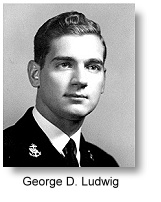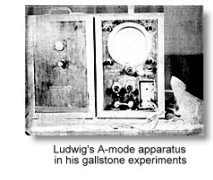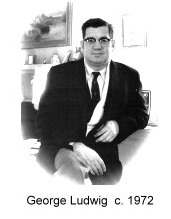First abdominal ultrasound used to detect gallstones

Dr. George Lewig was the first to detect gallstones with the use of the first abdominal ultrasound in the 1940's. Working at the University of Pennsylvania, he systematically studied the organs and tissues from animals and experimented with various frequencies and methods. He pioneered the study of gallbladder ultrasound by detecting gallstones in animals and humans. He operated on three dogs and implanted gallstones in their back muscles and gallbladders. He then observed distinct changes in the ultrasonic waves sent back to the transducer. He also did studies in kidney ultrasound to detect stones in the body.

He wrote " It seems advisable to investigate methods using transmitted energy. In this way one might capitalize upon differences in absorption of ultrasound in various types of tissue. With a transducer on one side to transmit energy, and another on the opposite side to receive it, an area could be scanned. The amount of energy received would vary from point to point, as would consist of the energy input minus that reflected, scattered, and absorbed. Any structure that would not permit as large transmittance of energy as the surrounding medium could be outlined with a suitable detector in this way it might be possible to outline a tumor in certain regions of the body." Lewig will always be known for the
first abdominal ultrasound. Ian Donald was the pioneer of obstetric ultrasound.

back to history of ultrasound
Genesis ultrasound machine home page




